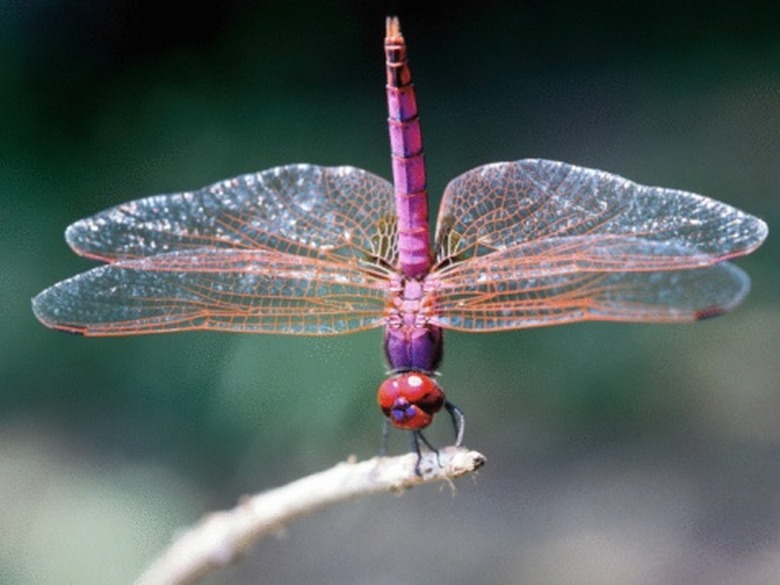How To Attract Dragonflies & Ladybugs
Things Needed
- Plants attractive to ladybugs
- Plants attractive to dragonflies
- Ladybugs
- Equipment for digging a pond (if you do not live near a water source)
- Tree branches
- Old logs
- Slate/flat stones
Tip
Slate placed around your water's edge or piles of flat stone attract a certain breed of dragonfly, the black-tailed skimmer orthetrum cancellatum.
Warning
Avoid invasive water plants that can take over your entire pond, including reed mace typha latifolia and common reed phragmites australis as well as New Zealand water stonecrop crassula helmsii.
Ladybugs and dragonflies are beneficial insects to have around your garden or property as they eat nuisance insects. Ladybugs feast on whiteflies and aphids therefore preventing them from wrecking havoc on your gardens, while dragonflies consume mosquitoes, whose bites itch and may even contain viruses. Attract both of these insects to your yard by planting flowers they find attractive as well as creating or maintaining a waterway/source for dragonflies. If you live near a pond or stream ensure that beneficial plants for dragonflies pepper the area.
Ladybugs
Step 1
Plant lots of tulips, lilies and other cup-shaped flowers. Ladybugs are attracted to this shape and make their homes in these kinds of flowers. Other flowers and plants attractive to ladybugs, due to their pollen or shape, include geraniums, white cosmos, dill and fennel.
Step 2
Cut down on the spraying of insecticides. Ladybugs are sensitive to these chemicals which also kill insects ladybugs eat, therefore preventing them from entering your garden and lawn.
Step 3
Purchase ladybugs at your local garden supply store or nursery. Refrigerate the insects for a few hours before setting them in your garden, this slows them down and makes them less likely to vacate your property. Release the ladybugs at nighttime or before the sun rises as these insects use the sun as navigation, making them more likely to leave your garden. Also keep plants watered for the next few days following the release to encourage the ladybugs to stick around.
Dragonflies
Step 1
Dig a pond that is about 20 feet in diameter with varying depths. The pond should be shallow around the edges and at least 2 feet deep in its center. Deeper water offers dragonfly nymphs protection from predators including raccoons. Different water depths are also necessary for assorted water plants to thrive, such as rushes and underwater plants.
Step 2
Plant vegetation in and around the pond to attract dragonflies. These include deep water plants such as curly pondweed, hornwort and water starwort as well as deeper water floating plants including fringed waterlily, frogbit and broad-leaved pondweed. Shallow water emergent plants that attract dragonflies include water horsetail, flowering rush, bog bean and bur-reed.
Step 3
Leave an area of long grass around your pond for dragonflies to roost in. This also attracts other insects for dragonflies to feed on.
Step 4
Leave sticks around the pond for dragonflies to perch on as well as a few old logs, which slowly rot and provide a nesting area for dragonflies.
